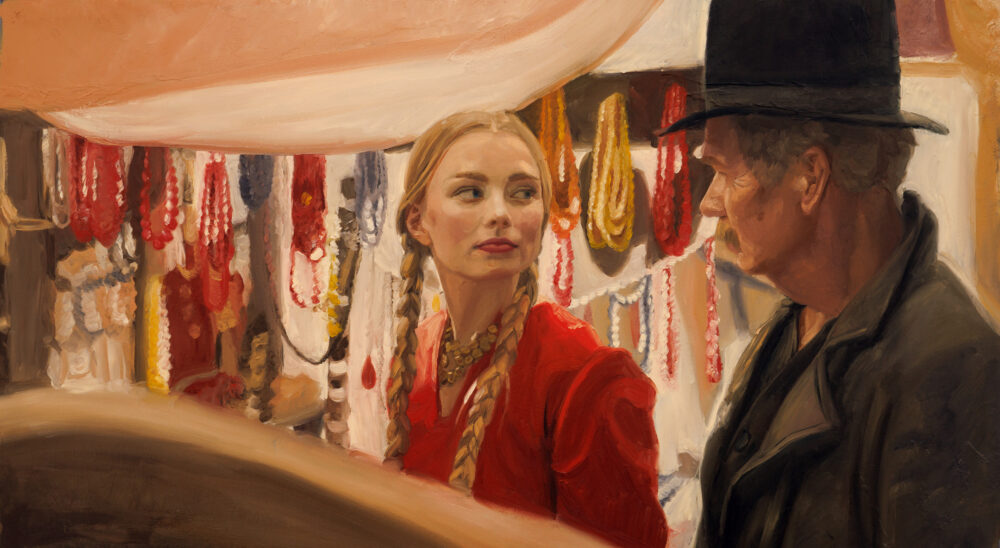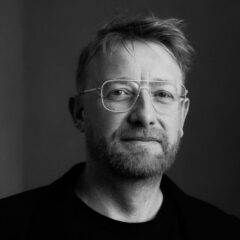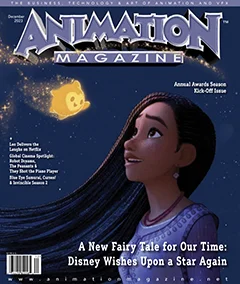|
Getting your Trinity Audio player ready...
|
This year’s Toronto International Film Festival saw the premiere of The Peasants, the latest oil-painted masterstroke of animation from Hugh and DK Welchman. The husband-and-wife team are best known for their 2017 debut Loving Vincent, a breathtaking, starry-eyed study of Vincent van Gogh’s life (and last days) as a painter.
The filmmakers tell Animation Magazine that the beginnings of this latest project go back to the time DK recommended Władysław Reymont’s Nobel Prize-winning novel, The Peasants, to her husband. They knew that the source material not only provided an opportunity for representation of DK’s Polish culture, but also was a story that portrayed the struggles, strength and passions of a vital female lead.

Painting Poland

“After Loving Vincent, people were asking us, ‘Which artists are you going to do next?’” recalls Hugh. “And the truth is, we thought there were many more possibilities rather than [to] stick to the study of a single artist. We were looking for something different. So, when I read the book — learning so much about my wife’s culture — I thought it was a masterpiece; that if this was an example of English literature, it would have had numerous adaptations by now.”
But despite DK’s intent to both educate and inspire her U.K.-born husband to pursue an adaptation, there remained some trepidation. “Of course, all of that is the glorified version of our story. I think the truth is that I immediately thought, ‘No way — people will kill me!’ Because Reymont is a national treasure in my country, and I know full well that the Polish can be tough … as you will see from our film.”
Originally published as a four-volume epic, The Peasants (a.k.a. Chłopi) focuses on the village of Lipce — specifically, the troublesome romance involving a wealthy widower, Maciej Boryna, his young peasant bride, Jagna, and his son, Antek, with whom she has fallen in love. The scandal is unveiled across the seasons and observed by other peasants presenting somewhat of a reflective dream of rural Poland on the cusp of the 20th century. In capturing this magnum opus, the most notable production change from their first project was to take a more philosophical approach. As DK notes, “Because we had particular paintings to shape the story of Loving Vincent, every work of art had to be linked. In this case, we had to come up with a definitive visual approach for a preexisting story.”
The visual style and process that has emerged is a remarkable feat in the development of independent animation. They drew inspiration from European realism — specifically Józef Chełmoński and French realist Jean-François Millet — and the rest of the Young Poland Movement that Reymont belonged to during this period, “It made complete sense for this approach to fit with the painters who were working at a time when Poland had been wiped off the map by Russia, Prussia and the Austro-Hungarian Empire,” states Hugh.
“The movement was really expressing the national character and culture that was alive back then when it was being completely suppressed,” he adds. “Reymont’s poetic descriptions were so epic and vivid that it felt as though live action just wouldn’t do it justice; that the actual place just doesn’t look as beautiful and bucolic. It couldn’t be beautiful enough. He spends four pages on a storm and the great thing is we can do that in one painting, and so we could visually portray the richness and the complexity of his descriptions by doing it as an oil-painting animation.”
‘The fact is that you can bring a different level of artistry, emotion, complexity and ability from oil painting than you can from photography. It’s all just different forms and tools. We just want to do stuff with heart.’
— Director DK Welchman
A total of 127 artists worked on the oil-painting animation, but not at the same time, including traditional painters based in Lithuania, Poland, Serbia and Ukraine. Among these numbers were 61 digital animators working on the in-betweening, and 20 digital painters working on matte paintings and fixes. In total, The Peasants took three years to paint and animate, taking five hours to paint a single keyframe. “We have over 40,000 frames of oil paintings. If one person were to paint the entire film, it would take almost 100 years.”
Partnership and Process
Hugh and DK work together very closely, and although the dynamics changed working together on this film, it suited the scope and complexity of the production. “On Loving Vincent, we directed everything together for the live action,” says Hugh. “But the idea with this one was for DK to direct.” Working with the Polish language, it made more sense for DK to take as much control as possible over the live-action reference, directing 90 percent of the footage, “I worked closely with the actors, doing rehearsals. The only part I missed was a section of the main battle, which Hugh managed to cover.”
As you can already imagine, one director isn’t enough on such a mammoth project. DK, a skilled oil painter herself, was also in charge of the animation. “I would approve frames every day,” she says. “Arriving at the studio in the morning, we would have an online meeting with the Serbian studio and the supervisors, analyzing the shots, looking for corrections and approving the first frames. We would then connect to the other studios and do the same. Approvals will involve scrutinizing the use of texture, light, anatomy, characters’ features — everything. Once the first frame is approved, then the painter can carry on and I can just watch daily, which is usually just one frame more each day!”
The Welchmans own their method, employing myriad techniques that marry tradition with technological processes. With half of the live-action segments filmed on set and the other half on greenscreen, they used as many VFX technologies and tools as possible to produce the final composites for each shot, such as building the Village in Unreal for a live view. There were hand-drawn elements, with other models added via Maya; weather effects, CGI animals and background characters were all created in Houdini. As an approximation of how the film will look to help repaint in oils, it is important to point out that although The Peasants is certainly closer to rotoscoping, there is no tracing. The shots remain on a screen as a reference with only Dragon used to capture and onion skin the previous frames.
There are interesting parallels to advancements in artificial intelligence, and those who may ignorantly dismiss the aesthetic of the animated feature as an AI render rather than “oilscope.” “A lot of the painters that we’re referring to were at a pinnacle of their craft, dealing with the invention of photography,” DK points out. “Similar questions were asked: ‘Why are you bothering anymore to paint when you can just take a photograph?’ If people out there want to use CGI or AI, then great. In fact, we attempted to use AI for in-betweening, but it was a disaster. There was just no way that it could cope with the play of light on canvas, the variation and overall individuality. The fact is that you can bring a different level of artistry, emotion, complexity and ability from oil painting than you can from photography. It’s all just different forms and tools. We just want to do stuff with heart.”
The Peasants was released in Poland in October. Sony Pictures Classics will release the movie in select U.S. theaters for awards consideration.














 Win a Funko X Lilo & Stitch Prize Pack!
Win a Funko X Lilo & Stitch Prize Pack! 


